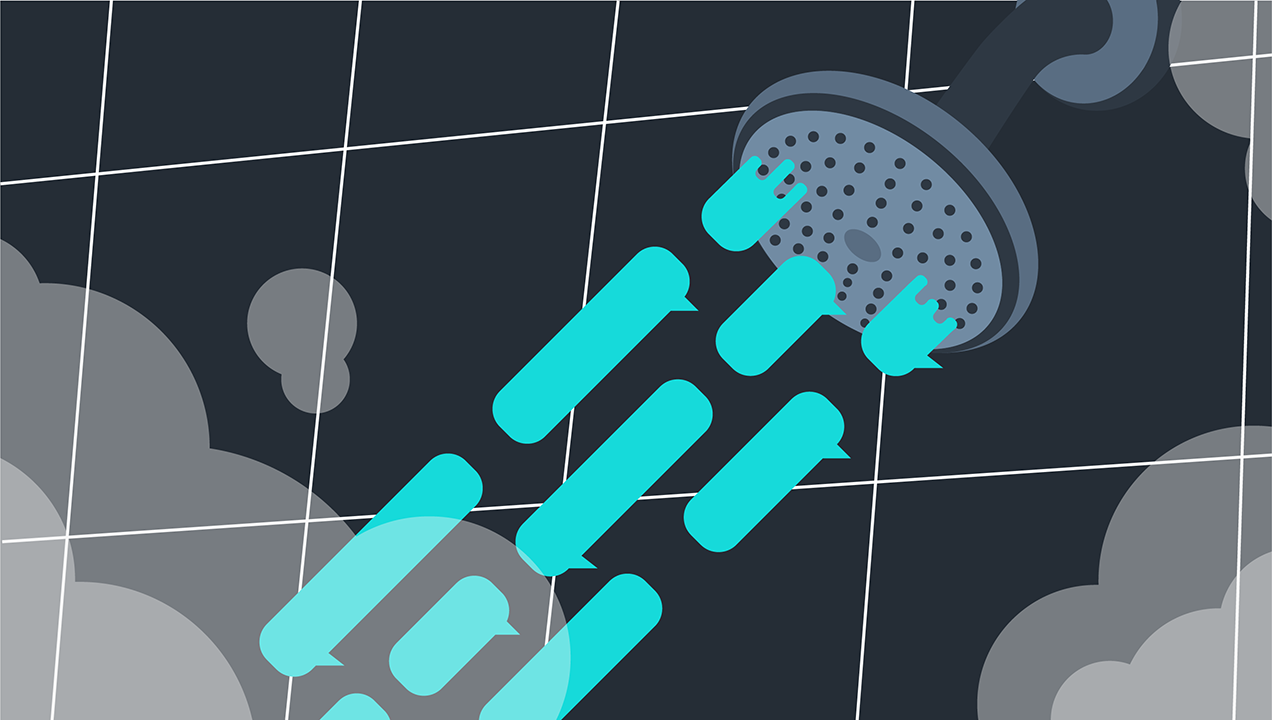Bathroom-Focused Voice-Tech Makes A Splash At CES
Every year, the offerings at CES prompt people in the industry to start shouting out various theories about trends in technology, but this year we were excited to see many of our previous research observations reflected in the new products that are being designed.
Everyone and their grandmother has spoken at great length about CES this year, whether it was the sex toy controversy, smart doorbells, 8k TVs or the Alexa infused… everything. But this preponderance of talkative appliances actually speaks to some interesting trends in voice that we can see emerging in the new developments at CES.
The trend that speaks to a lot of the underlying strengths of voice, and the one that seems quite ridiculous in the abstract, is voice powered bathrooms. Between a smart toilet, a shower that you can activate on command and the usual array of “smart mirrors” there are probably more bathroom-based voice innovations at CES than for use in any other area.
Despite the obvious discomfort some people have with the idea, the bathroom is actually a great location for an Alexa or Google Home to live. As we discussed last year. Voice assistants are particularly useful in “Linger Spaces” around the home. The areas where users just hang around for a little while in the middle of their usual course of actions. In combination with so many people using voice assistants to provide a morning briefing, daily news or even just a weather report before heading out for the day; the bathroom becomes one of the best linger spaces for this information to be delivered while the usual ablutions and makeup applications are undertaken.

Another key area where we are seeing voice come to the fore is in the voice activated shower. This is less because hitting a button is too onerous a task for users and more because the UI for most showers is fundamentally inaccessible. Every different shower seems to have a different interface to adjust its settings, none of them are particularly intuitive and many of them seem to be so sensitive that you can go from freezing to scalding in an instant. When you introduce multiple users with different temperature preferences, or worse yet – house guests – then you have a recipe for disaster. Using a voice interface eliminates the need to deal with the original UI, and opens up the possibilities of pre-set modes for different users.
On a grander scale, the idea that voice could be introduced to replace legacy UI systems that have proven to be difficult to navigate without the massive cost of overhauling the existing systems is inherently appealing, both to the users who get the benefit of a simpler interface and to whoever holds the purse strings.
The Smart Toilet has been on the go in one form or another for a very long time, and even talking toilets with limited functionality have seen the limelight since the 90s, so the release of one with integrated voice technology is hardly surprising. The offering at CES this year was lacking a few key features that would have made it valuable for people with limited mobility, but one of the most touted benefits of it was being able to flush without having to touch the toilet.
Even the most avid germaphobe probably realizes that there is only a marginal hygiene benefit to “hands free” flushing in a home bathroom. But just because this application of the technology is only going to be of benefit to fringe users, that does not mean that it is useless by any means.
The fact that the bathroom is a water rich environment is obviously a factor in why touch-based controls for electrically powered devices might not be ideal, but there are plenty of industrial environments where contamination control is of far more significance than in a home bathroom. These are the places where we could see voice really coming to the fore; providing a key utility rather than a novelty.
So what trends do all these bathroom related developments point to in the future? They certainly suggest some new use cases for voice that may not have been considered before; whether they be industrial, in a hospital setting, for disabled users or even for germaphobes. The various minor developments and drastic lean towards Alexa incorporation also hint towards a future in which all the individual “smart” devices in the home may be slaved to a single central AI assistant that will serve as the mind and voice of the household.
